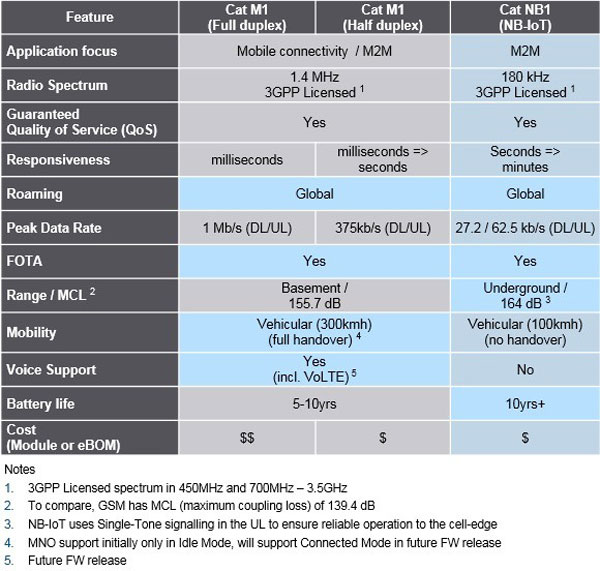Making perfect sense for gas, water and heat metering
All across Europe, Asia and the United States, smart electricity metering is being rolled out, and other utilities are looking to get in on this action. Those involved in water, gas and heat are now also seeking to take advantage of the benefits. There’s a key difference, however, between the smart meters used for electricity and those required for other utilities. This is around choosing suitable communications technology.
How smart meters for gas, water and heat are different
One reason for this is power. Electricity meters are connected to the grid, so benefit from an always‑on power source. Smart meters for other utilities must rely on batteries. What’s more, the high costs of replacing large numbers of batteries mean they must last at least ten years and beyond, so energy must be used sparingly.
Power isn’t the only thing affecting the choice of communications solution. Electricity smart meters are required to play a part in data‑intensive real‑time grid monitoring and demand response management, but the requirements for water, heat and gas meters are different. These devices are primarily there to collect and transmit information and monitor for leaks, neither of which is particularly data‑heavy or real‑time‑dependent.
Lastly, smart meters for gas, heat and water are often in locations that make communication more challenging: some buried under the road, others deep inside buildings, possibly surrounded by concrete or other absorbing material.
Choosing the right communications technology
Rolling out smart metering represents a major outlay for utilities companies. To future‑proof their investments, any solution needs to be reliable and both vendor- and technology‑independent. On the communications side, this means using open standards that enable the smart metering platform to integrate with a range of communications systems.
Get this choice right, and the utilities providers can enjoy significant up‑front and ongoing savings. And the advent of 4G‑based low‑power wide‑area (LPWA) solutions means gas, water and heat meters no longer need to rely on traditional, costly and power‑hungry 2G/3G communications, meshed radio systems or stop over architectures.
There are two big players in the LPWA space: SigFox and LoRa, both proprietary technologies that typically use the unlicensed spectrum. Alongside these are the forthcoming 3GPP IoT technologies, which will use the licensed spectrum and are tuned to deliver on the varying requirements of the Internet of Things (IoT). These technologies standardised by 3GPP are divided into LTE Cat NB1 (also called Narrowband IoT, or NB‑IoT), and LTE Cat M1 (or enhanced machine‑type communications, eMTC).
LTE Cat M1 and Cat NB1: Ideal for utility metering
The 3GPP technologies deliver a blend of characteristics that’s ideally suited to gas, heat and water metering. They use widely available infrastructure, consume very little energy, keep device and deployment costs low, can reach deep within buildings and can support large numbers of units.
Currently, LTE Cat M1 is gaining most traction with network operators in the USA, while LTE Cat NB1 is being advanced in Europe, Asia and the Pacific region. Within the next 2 years, both are expected to be widely available.
Comparing LTE Cat NB1 with LTE Cat M1
Broadly speaking, LTE Cat NB1 is better able to penetrate into buildings, provides longer battery life and is more cost‑effective when it comes to design and implementation. This makes it suitable for the less‑frequent meter‑reading associated with gas, water and heat, particularly in residential applications.
LTE Cat M1’s key strengths are in its lower latency and higher bandwidth for data handling, making it a suitable choice where there’s a lot of interaction between the meter and the utility company, including in control applications and industrial scenarios.
The table below shows the specifications in detail and how LTE Cat M1 and LTE Cat NB1 compare:

The technology in use
Both LTE Cat M1 and LTE Cat NB1 are undergoing trials in utility and metering applications, with u‑blox having been involved from the start.
Kamstrup and Diehl Metering are two major vendors in the utility sector pioneering LTE Cat NB1 technology, for example.
In Spain, Vodafone is trialling a large‑scale water meter implementation with Aguas de Valencia, which enables automated reading of several thousand units.
Verizon was the first telecoms provider in the USA to offer LTE Cat M1, and has since been joined by others. AT&T, for example, is launching trials with large meter vendors.
Australian telecoms companies are also rolling out LTE Cat M1 and LTE Cat NB1, with a notable trial involving sewage network monitoring.
These trials demonstrate that technologies using the licensed spectrum on public mobile networks are advancing rapidly. For those in the utilities sector, LTE Cat M1 and LTE Cat NB1 offer a suitable blend of capabilities to meet the challenging requirements of gas, water and heat smart metering.
For more information about u‑blox LTE Cat M1 and LTE Cat NB1 modules, visit the website.
Guest blog by Ludger Boeggering, Senior Professional Market Development - Product Strategy, Product Center Cellular, u-blox.
Courtesy of u-blox.











